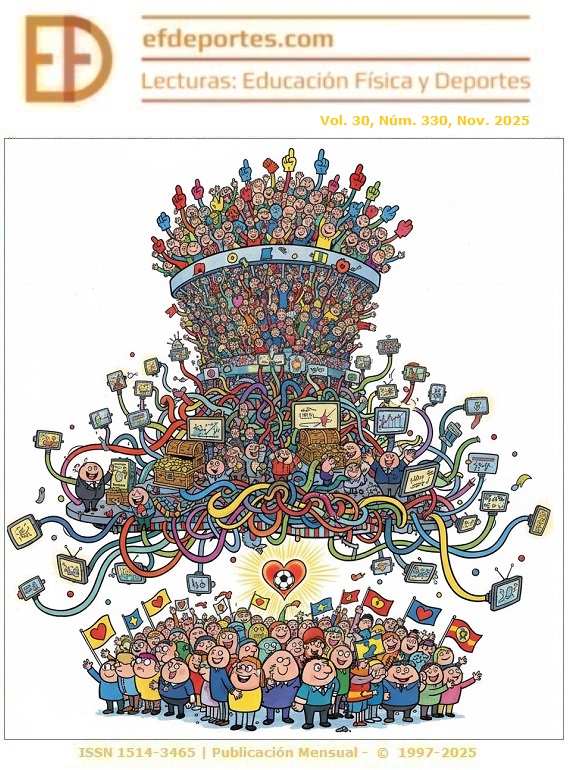Effect of Aquatic Gym Associated with Flexibility Training and does not Control Postural Movements
Abstract
Introduction: The aging process involves many changes that can increase the risk of falls. Among the risk factors, changes in postural control and loss of flexibility are likely related. Objective: To analyze the effect of flexibility training associated with aquatic gym on postural control and joint range of motion in elderly women. Methodology: 46 elderly women were divided into 2 groups: 25 women participated in flexibility training in addition to aquatic gym (IG), and 21 performed only aquatic gym (CG). Postural control was assessed by measuring center of pressure (CoP) oscillations and maximum joint range of motion with a goniometer. Results: According to the analysis of comparisons of the variables measured between the groups using the Student's t-test, the IG did not present significant changes in postural control. The CG demonstrated a substantial reduction in mean velocity (p=0.03) and total displacement of the COP in the mediolateral axis (CoPy) (p=0.04). The IG significantly increased the maximum joint range of motion in the hip and ankle joints. The CG showed a significant reduction in the mean velocity (p=0.03) and total displacement of the CoP in the anteroposterior axis (p=0.04). The IG increased the range of motion in the hip and ankle joints. Conclusion: Therefore, associated training contributes to the improvement of the range of motion in the hip and ankle joints. Furthermore, the isolated practice of aquatic gym contributes to the improvement of postural control in elderly women.
References
Alvarenga, R., Porto, F., Braga, R., Cantreva, R., Espinosa, G., Itaborahy, A., Soares, PP, e Gurgel, J. (2011). Construction and calibration of a low-cost force plate for human balance evaluation. Portuguese Journal of Sports Sciences, 11(Suppl 2), 961-964. https://ojs.ub.uni-konstanz.de/cpa/article/view/4994
Borg, G. (2000). Escalas de Borg para dor e esforço percebido (1ª ed.). Editora Manole.
Campos, C.M. (2019). Efeitos de um treinamento multimodal no controle postural de idosos da comunidade [Tese de doutorado. Faculdade de Medicina, Universidade de São Paulo]. https://doi.org/10.11606/D.5.2019.tde-25102019-161648
Etikan, I., Musa, S.A., e Alkassim, R.S. (2016). Comparison of convenience sampling and purposive sampling. American Journal of Theoretical and Applied Statistics, 5(1), 1-4. https://doi.org/10.11648/j.ajtas.20160501.11
Feland, B., Myrer, W., Schulthies, S., Fellingham, G., e Meason, G. (2001). The effect of duration of stretching of the hamstring muscle group for increasing range of motion in people aged 65 years or older. Physical Therapy, 81(5), 1110-1117. https://doi.org/10.1093/ptj/81.5.1110
Hernández-Guillén, D., Tolsada-Velasco, C., Roig-Casasús, S., Costa-Moreno, E., Borjade-Fuentes, I., e Blasco, J.M. (2021). Association ankle function and balance in community-dwelling older adults. PloS One, 16(3), e0247885. https://doi.org/10.1371/journal.pone.0247885
Henry, M., e Baudry, S. (2019). Age-related changes in leg proprioception: implications for postural control. Journal of Neurophysiology, 122(2), 525-538. https://doi.org/10.1152/jn.00067.2019
Khani, M.K., Ardakani, K.M., e Mansori, M.H. (2021). Investigating the Relationship between Lower Limb Flexibility with Motor Function and Risk of Falling in Visually Impaired Individuals. Physical Treatments-Specific Physical Therapy Journal, 11(2), 93-102. http://dx.doi.org/10.32598/ptj.11.2.429.2
Kim, S.B., e O’Sullivan, D.M. (2013). Effects of aqua aerobic therapy exercise for older adults on muscular strength, agility and balance to prevent falling during gait. Journal of Physical Therapy Sciences, 25(8), 923-927. https://doi.org/10.1589/jpts.25.923
Navarro-Ruiz, A., Caro-Alonso, P.A., e Rodríguez-Martín, B. (2022). Eficacia del ejercicio acuático en personas mayores de 50 años prefrágiles. Una revisión sistemática. Gerokomos, 33(3), 168-174. https://scielo.isciii.es/scielo.php?script=sci_arttext&pid=S1134-928X2022000300007
Passos, B.M.A., Souza, L.H.R., Silva, F.M., Lima, R.M., e Oliveira, R.J. (2008). Contribuições da hidroginástica nas atividades da vida diária e na flexibilidade de mulheres idosas. Revista da Educação Física/UEM, 19(1), 71-76. https://doi.org/10.4025/reveducfis.v19i1.4316
Pereira, C.B., e Kanashiro, A.M.K. (2022). Falls in older adults: a practical approach. Arquivos de neuro-psiquiatria, 80(5 suppl 1), 313-323. https://doi.org/10.1590/0004-282x-anp-2022-s107
Santos, A.G., e Vilela, A.T. (2020). Benefícios físicos da hidroginástica na terceira idade. Revista Prisma, 1(2), 34-45. https://revistaprisma.emnuvens.com.br/prisma/article/view/20
Shumway-Cook, A., e Woollacott, H.M. (2010). Controle motor: Teoria e aplicações práticas (3ª ed.). Editora Manole.
Soriano-Férriz, B., e Alacid, F. (2018). Programas y ejercicios de flexibilidade dentro de las clases de educación física, en niños y niñas escolares, y su efecto en la mejora de la extensibilidad isquiosural: Una revisión sistemática. MHSalud, 15 (1), 1-12. http://dx.doi.org/10.15359/mhs.15-1.1
Teixeira, C.S., Lemos, L.F.C., Lopes, L.F.D., Rossi, A.G., e Mota, C.B. (2008). Corporal balance and physical exercises: An investigation in older adult women who practice different exercise modalities. Acta Fisiátrica, 15(3), 156-159. https://doi.org/10.11606/issn.2317-0190.v15i3a102939
Zanin, N.B., Mascarenhas, J.L., Torres-Silva, R., Mafra, F.F.P., e Macedo, M.M. (2019). Influência da prática de hidroginástica no equilíbrio e independência funcional de mulheres idosas. Revista Científica da Faminas, 14(1), 14-21. https://periodicos.faminas.edu.br/index.php/RCFaminas/article/view/414
Wang, L., Yu, G., Zhang, X., Wang, Y.Z., e Chen, YP (2023). Relationship between ankle pain, range of motion, strength and balance in individuals with functional ankle instability: a cross-sectional study. BMC musculoskeletal disorders, 24(1), 955. https://doi.org/10.1186/s12891-023-07079-1
Author Biographies
http://lattes.cnpq.br/6038690374272063
http://lattes.cnpq.br/9088184774925354
http://lattes.cnpq.br/2704394530711813
Copyright (c) 2025 Lecturas: Educación Física y Deportes

This work is licensed under a Creative Commons Attribution-NonCommercial-NoDerivatives 4.0 International License.









